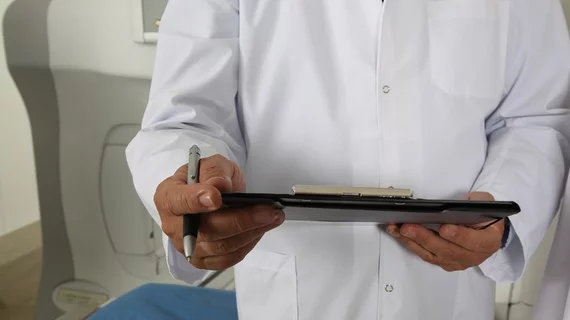How CDS impacts imaging ordering habits of less experienced physicians
Numerous studies have shown that clinical decision support (CDS) can help reduce unnecessary imaging. According to a new study in the American Journal of Roentgenology, however, not enough research has focused on how CDS tools impact less experienced providers such as house staff physicians.
“It is not known how CDS tools may differentially affect house staff (compared with more senior personnel) in imaging test ordering behavior,” wrote Jashvant Poeran, MD, PhD, Icahn School of Medicine at Mount Sinai in New York City, and colleagues. “With CDS for imaging tests embedded in our hospital's electronic health record system, we therefore aimed to assess the overall effectiveness of CDS on appropriateness of advanced imaging orders in the emergency department (ED) setting and whether this varied when comparing house staff physicians to non–house staff physicians (based on the lack of experience in the former group).”
Poeran et al. tracked ED data for CT and MRI orders from their own institution. This included more than 5,000 orders from before CDS implementation in April 2013, more than 7,000 orders from the first intervention period (post-CDS 1) and more than 14,000 orders from the second intervention period (post-CDS 2).
During the post-CDS 1 period, which lasted from April 2014 to March 2015, CDS alerts were triggered when an order had an ACR Appropriateness Criteria score of four or lower. During the post-CDS 2 period, which lasted from April 2015 to June 2016, CDS alerts were triggered when an order had a score of six or lower.
Overall, the mean score for CT and MRI orders before CDS implementation was 6.2. The mean score remained the same during the post-CDS 1 period, but increased to 6.7 during the post-CDS 2 period. The team’s analysis found mean scores significantly increased among house staff physicians, but it was the same increase that was seen among non-house staff physicians.
“Our investigation reiterates the positive effect of CDS tools in increasing the rate of appropriate imaging use,” the authors concluded. “Although our study revealed no significant difference in the effect of CDS on house staff physicians compared with non–house staff physicians, the results likely reflect the multifactorial influences on ordering behavior in our health system. CDS tools may thus serve as an equalizer in directing quality patient care from physicians across the training spectrum with varying familiarity with Appropriateness Criteria.”

